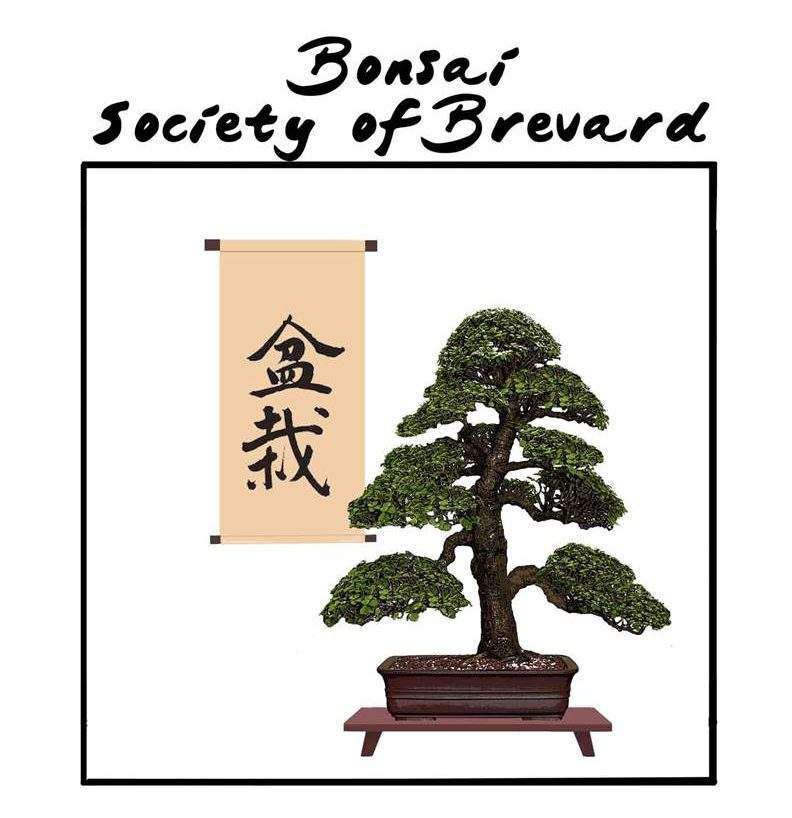This is a continuation of the bonsai care guidance authored by Jim Smith and originally printed in Florida Bonsai Magazine in 1986. It has been updated by Jim and is reprinted with both his permission and that of Florida Bonsai Magazine. The care guidance is suitable for Zones 9b and 10a.

Bonsai in Brevard (Zone 9b and Zone 10a)
May is our first month of the rainy season. But some years it is as dry as our winter months. Your bonsai will require about the same care in May as they did in April.
Watering
Check your bonsai every day to make sure that they get enough water. If you use a sprinkling system for your bonsai as you may want to group together your Bald Cypress, Lantana, Maple and other plants that require more water, so that they can be easily checked.
Fertilizer
Don’t neglect to fertilize your plants now that they are growing. You are watering more now therefore the soil is being leached and needs regular applications of fertilizer. Plants growing in full sun need more water and fertilizer than those growing in shade. Use fertilizer that contains the major and minor elements. — Don’t forget to move or turn your bonsai so that they receive sunlight now that the sun is taking a more northerly route.
Insects and Diseases
Continue to check your plants for damage from insects. Aphids can be found on the new buds and leaves of many plants during the growing season. The insects suck the juices from the new growth and cause the leaves to curl. If the insects are confined to just a few branches you may want to remove the infested leaves instead of spraying. Be careful not to accidentally carry the insects to your other plants.
Pinching
Pinching is extremely important at this time of the year. Much new growth will develop on your bonsai this month and if pinching is neglected your trees will lose their shape. —— Review the information on Pinching, Wiring, and Refinement in your bonsai books. (Or books from the club library) — As soon as the new leaves of your bonsai harden up you can leaf pinch your tree. Make sure that you remove all the leaves including the terminal bud on each branch.
Potting
Pot those trees that have finished blooming this month. If you were unable to pot any of your bonsai that needed repotting earlier you can put them in a larger pot now so as not to disturb the roots. You can then root prune and repot in the correct container next year.
Cuttings and Layers
Continue to propagate any tropical plant that you need by cuttings, air layers or seeds. Plant tropical seed as soon as the fruit is ripe. bonsai soil is a good medium for starting seed. Keep the soil moist and shaded until the seeds sprout. Then move them to filtered sun with good air circulation. When the seedlings are large enough to transplant, remove the tap root and arrange the roots uniformly around the trunk on a flat soil surface as you would like them to look on the finished bonsai. The exposed roots of a bonsai are just as important as any other part of the tree.
Weeds
Weeds are always a problem for the gardener. Now that summer is on its way we find a new crop of warm weather weeds sprouting. If you have large areas to weed you may want to use a non-selective herbicide such as “Roundup”. The chemical is applied to the leaves of the weeds by spraying or the use of a sponge type applicator. The chemical is translocated throughout the plant causing it to die. When using this type of herbicide it is important that you do not get any of the chemical on the leaves of ornamental plants. Therefore, never spray if the wind is blowing, and the spray may drift. Low pressure will help prevent this.
Bonsai Society of Brevard
For more detailed information contact our Brevard based Bonsai club.
The Bonsai Society of Brevard is one of the many clubs within the Bonsai Societies of Florida.
